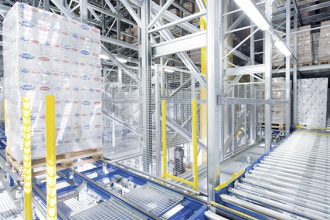Software + Machines + Workers = Highly Efficient, Real-Time Decision Making

Achieving a fully optimized warehouse — one that is highly efficient because it leverages data that enables management to make informed decisions in real-time — requires more than just software and controls, hardware solutions, and trained workers. Rather, it is the integrated connectivity between all three of these aspects that delivers the flexibility and adaptability demanded by today’s consumers. The topic was explored in a recent MHI Solutions magazine article, “Enhancing Connectivity Between Software, Machine and Worker,” produced by MHI’s Solutions Community.
Contributors note that flexibility amid changing operational conditions — including staffing levels, order volume and inventory levels — is what allows warehouse managers to get the most out of their resources. As a result, they can respond to shifting order volumes and faster delivery demands with less material handling equipment and fewer workers, reducing capital and operational costs.
Key to achieving this flexibility are the three key components:
First, warehouse software and controls, such as a warehouse execution system (WES), that communicates with the technologies and systems utilized within the operation. A WES organizes, sequences and directs resources (such as automated equipment and associates) to specific tasks that move items as efficiently as possible from receiving to shipping. Because a WES collects operational data, then analyzes it for patterns and offers recommendations on subsequent actions for improved productivity, warehouse managers can better respond to shifting conditions as well as better anticipate future needs.
Second, the technologies and equipment — such as conveyors, robots, packaging systems, automated storage and retrieval systems, sorters — that interact with inventory. These automated solutions both receive directions from overarching control software, but also convey key data points about their own functionality. Sensors embedded within the hardware can alert the WES to potential faults or errors or other mechanical issues, allowing preventive maintenance to occur in a timely manner and avoiding unscheduled downtime.
Third, the workers who directly interface with equipment and technologies as they perform assigned tasks, follow instructions, and manage exceptions. Today’s employees already likely use a smart device on a daily basis, such as a phone or tablet, making them inherently more comfortable with the latest fulfillment technologies. Additionally, current solutions are designed to support the worker with visual prompts, such as graphics or image displays depicting a product to pick or a process to follow. Language barriers are rapidly being overcome, with technologies communicating with an employee in his or her native language. And, because each worker’s productivity is tracked in real-time, work assignments can be parsed out in accordance with his or her abilities; this also supports performance-based pay models and incentives.
Want to learn more? The full article, featuring additional insights from MHI members, is posted here.



